My ambition with the snowdropathon is not merely to see every snowdrop species in flower, ticking them off my list like a botanical twitcher. I want to study the variation within and among species, visiting as many populations from as many parts of the range of each species as possible. Before Christmas, with only a handful of snowdrop species yet flowering, this has been relatively easy. In the new year it will become challenging.
In the 1970s Martyn Rix collected plants on Kastellorizo of a snowdrop that is now referred to Galanthus peshmenii. This plant has been propagated and distributed, though not very widely, as G. peshmenii ‘Kastellorizo Form’ though, of course, it is no more representative of the snowdrops on Kastellorizo than any other single snowdrop clone plucked at random from a wild population.

My impression from reading Aaron Davis’s Galanthus monograph was that Galanthus peshmenii on Kastellorizo grows on north-facing sea cliffs. This is exactly the situation in which I had seen it, not far to the east, on the Turkish island of Kekova, a couple of weeks ago. But, walking slowly to the north-east point of the island and looking carefully, I saw no snowdrops. It eventually occurred to me that the island of Kekova sunk by many metres, relatively recently (in the earthquake resulting in the destruction of the partially submerged city referred to in an earlier post) and so the cliffs now emerge sheer from the sea. On Kastellorizo, in contrast, the cliffs start at about 30m above sea level and this is the lowest elevation at which I found snowdrops on the island.
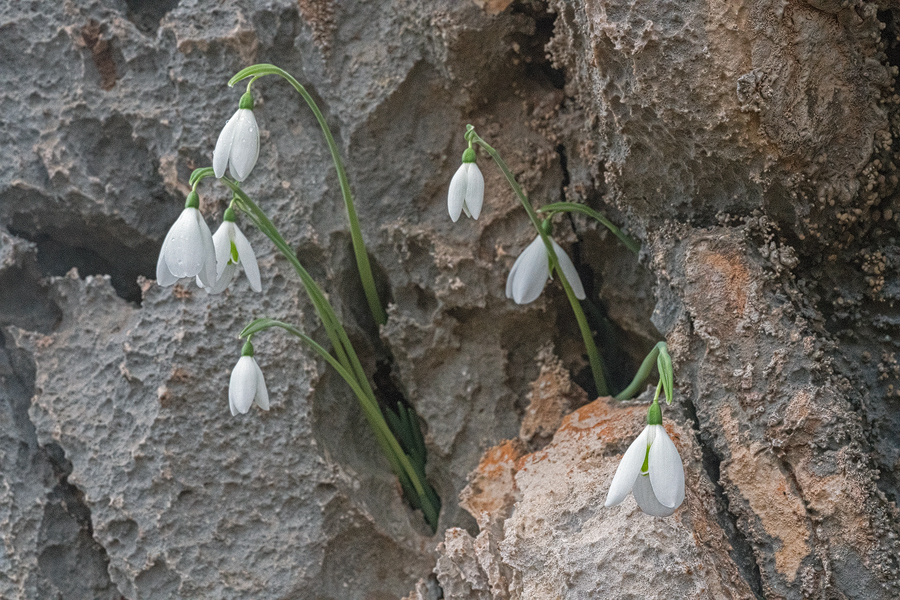
In one olive grove, surrounded by a tall fence of barbed wire to keep out the goats, there were many Narcissus tazetta, almost finished flowering.
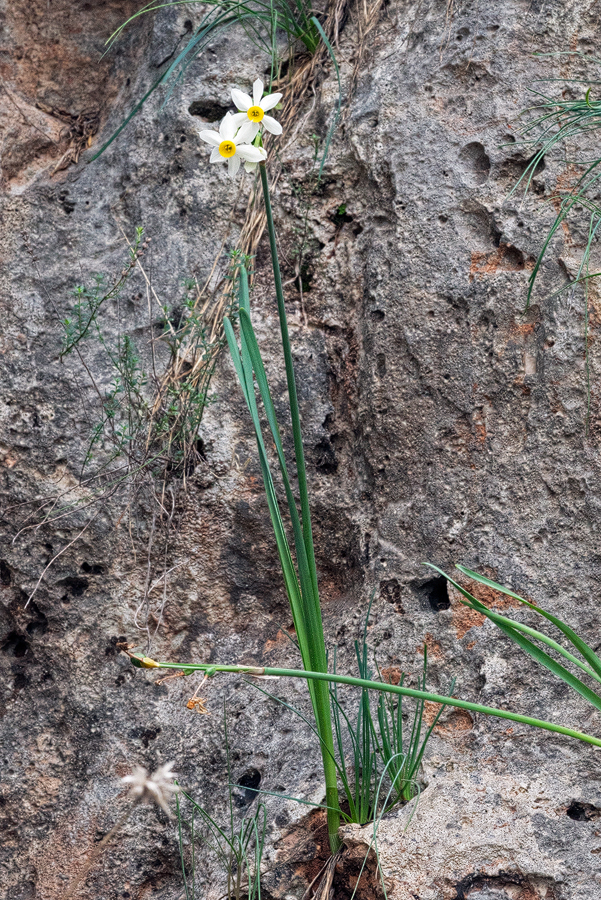
In the disturbed soil of the verges was an autumn-flowering form of Anemone coronaria, the flowers emerging violet, then fading to pale blue or, rarely, rose pink, as they aged. They looked almost like Meconopsis.
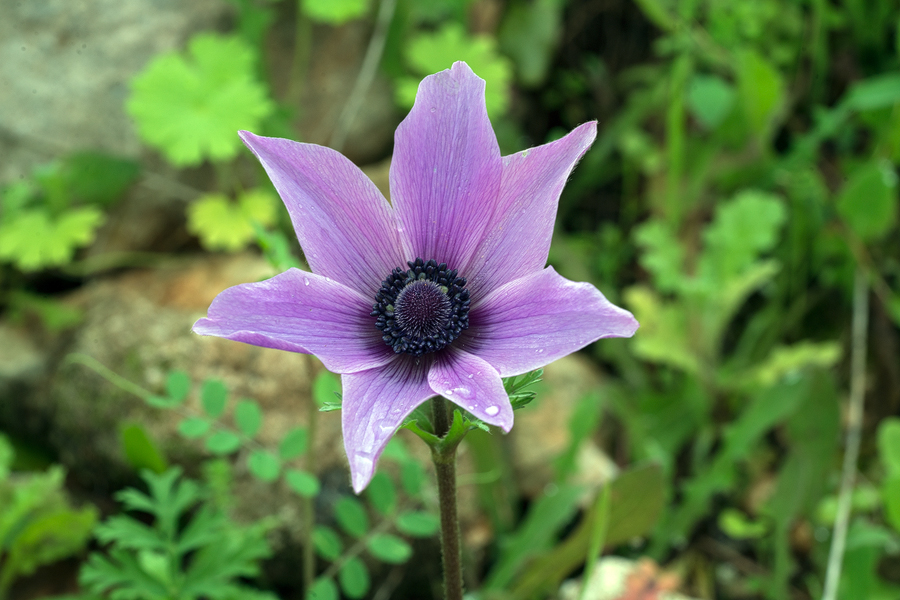
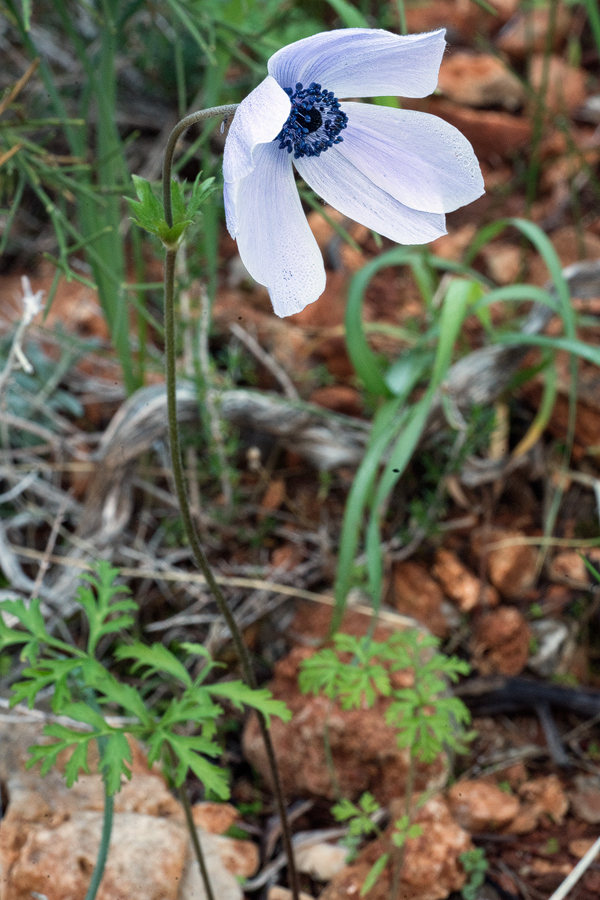
The main town of Kastellorizo clusters around a natural harbour on the north coast of the island. Immediately behind the town rise limestone cliffs, casting the scree at their bases into permanent shade. Looking up at the cliffs, I decided that this must be where the snowdrops grew. Fortuitously, someone in ages past had constructed a set of stone steps, which meander up the face of the crags, to the plateau at the top where once a thriving wine-growing industry flourished.
I saw snowdrops almost immediately, growing in crevices and in pockets weathered into the limestone, exactly as they grow on Kekova.
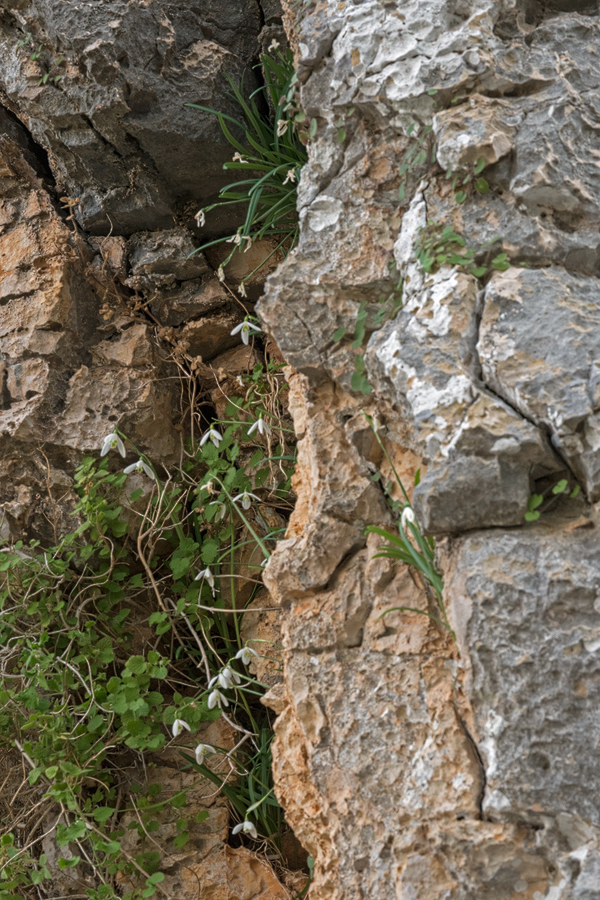
Over the ensuing days I spent many hours exploring the cliffs and found that the snowdrops were rather rare. Each little cluster might number only a dozen clones, or even fewer and they were by no means ubiquitous. The cliffs run east-west and face almost due north. Narrow fingers of rock protrude out from the face, creating small, deeply-shaded gulleys and it was in these places that the snowdrops were most adundant. Most of the few large clumps of snowdrops were growing in exceedingly inaccessible places. In his Galanthus monograph, Aaron Davis speculates that this may be because it is only in places that even goats are unwilling to venture that the snowdrops survive. I am certainly glad that my mum wasn’t watching, when I scaled some of the cliffs to take pictures. Indeed, my eyes were closed much of the time.
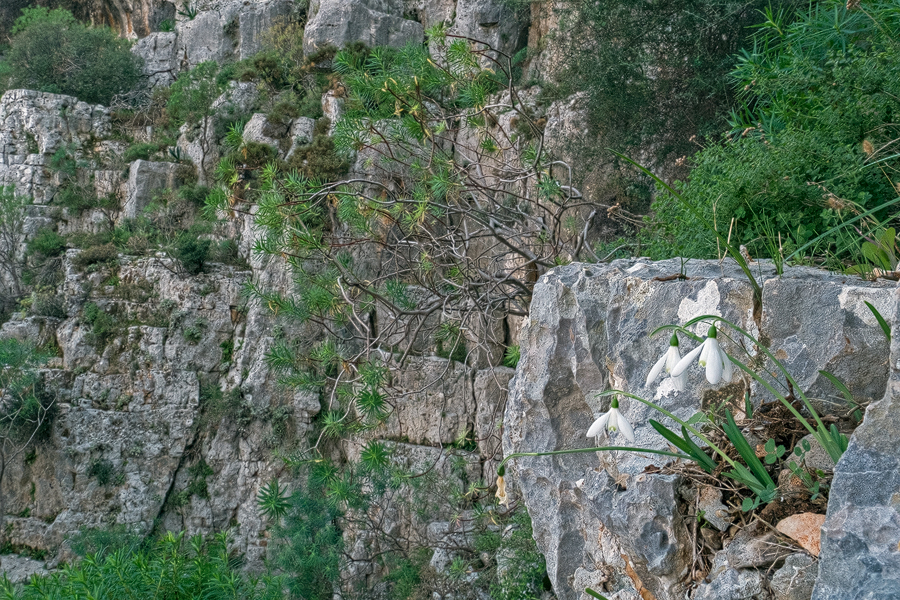
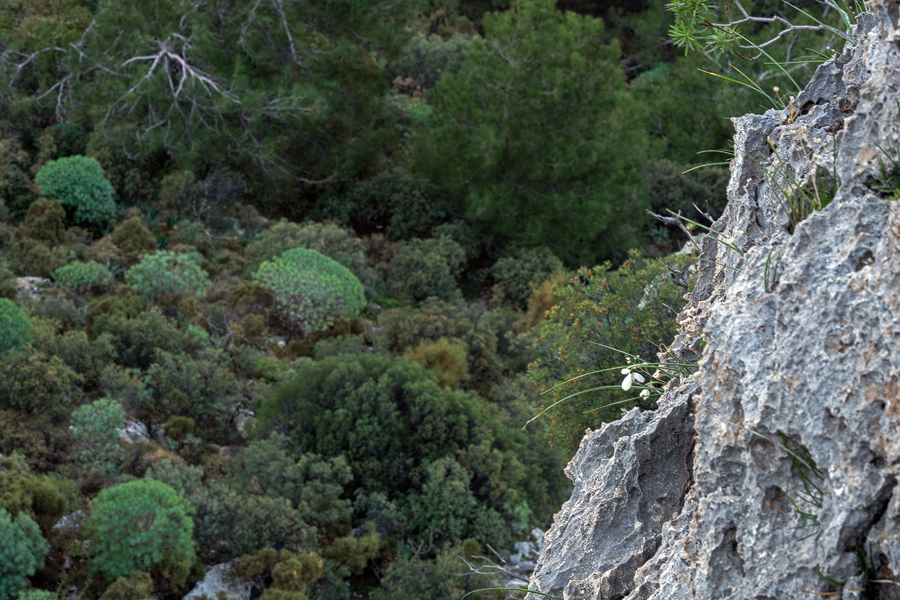
In places where they had found a congenial niche in the limestone, a lot of clones had built up into sizeable clumps, much like G. peshmenii on Kekova and on the Turkish mainland. But there were also a lot of single bulbs.
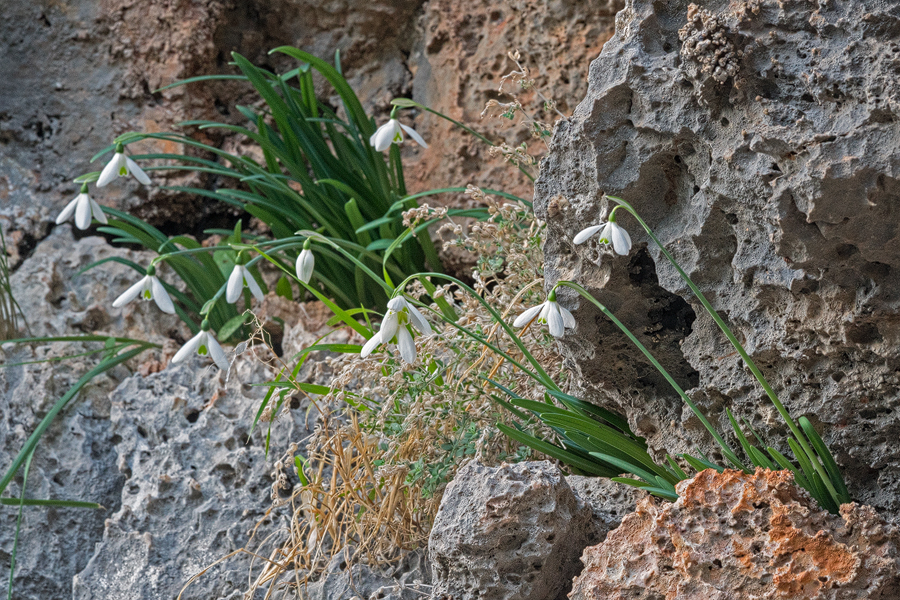
Flowering was well advanced in almost all cases and finished in some. Leaves were well-developed on most but not all of the plants that I saw. Whereas the earlier-flowering populations of G. peshmenii at higher elevations near Kemer typically flower before the leaves emerge, the later-flowering populations, near sea level on Kekova and Kastellorizo seem to produce leaves and flowers simultaneously, or at least to commence leaf growth as flowering progresses.
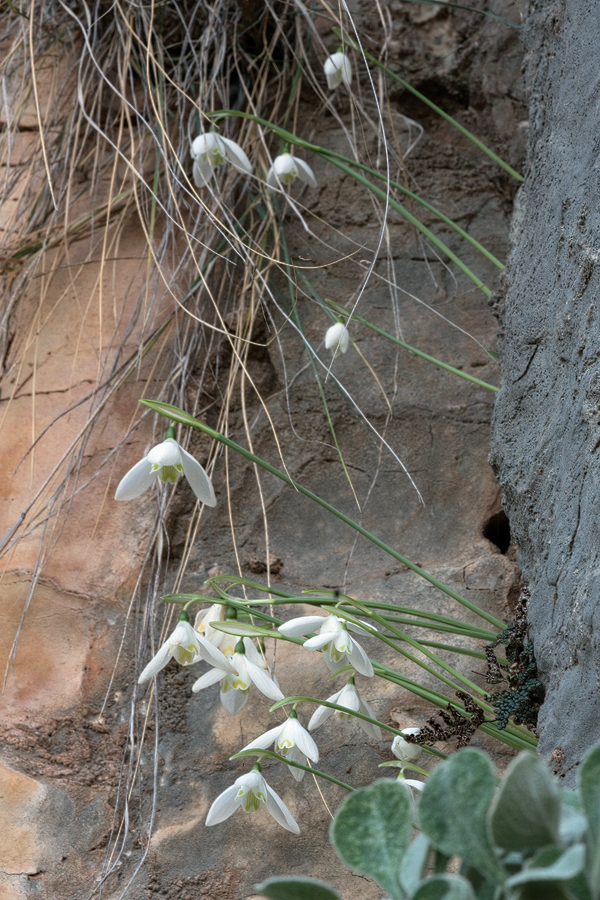
The leaves were glaucescent in colour, with a pale median stripe. This stripe, which seems always to be present, is generally not as prominent as it is in G. reginae-olgae, which also tends to have leaves that are greener.

The more plants of G. peshmenii I see, the more I think that the rather pyramidal outline of the flowers is characteristic of the species.

I did not see enough snowdrops on Kastellorizo to form a really clear impression of whether and how they differ from mainland G. peshmenii, other than in leaf development at flowering time. The inner segment markings did seem to be larger on average, typically covering a third of the segment on the adaxial surface, and sometimes more. The abaxial surface of the inner segments was typically shaded entirely green. On many plants in the populations near Kemer and Göynük, the inner segment mark is reduced to two dots, either side of the small sinus, whereas I saw only one such plant on Kastellorizo.
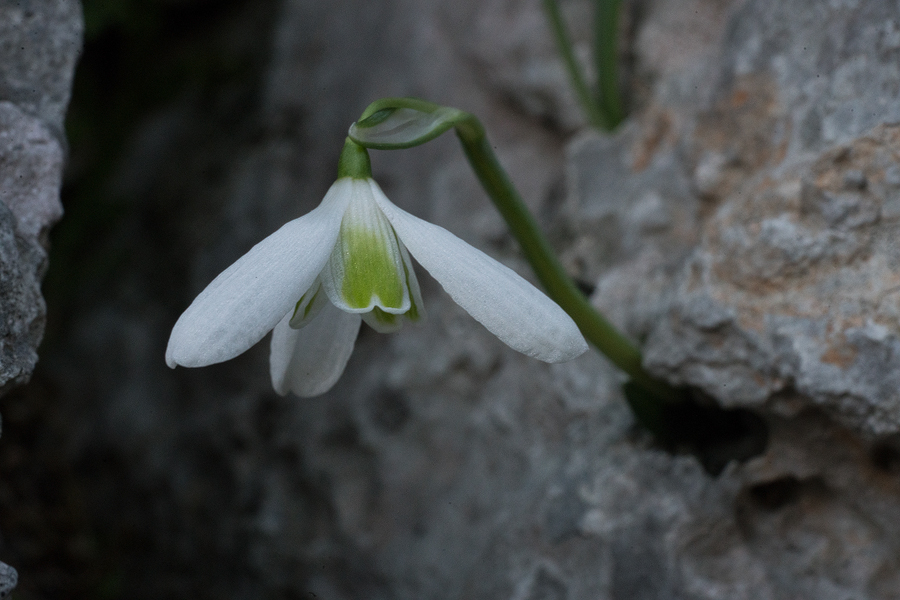
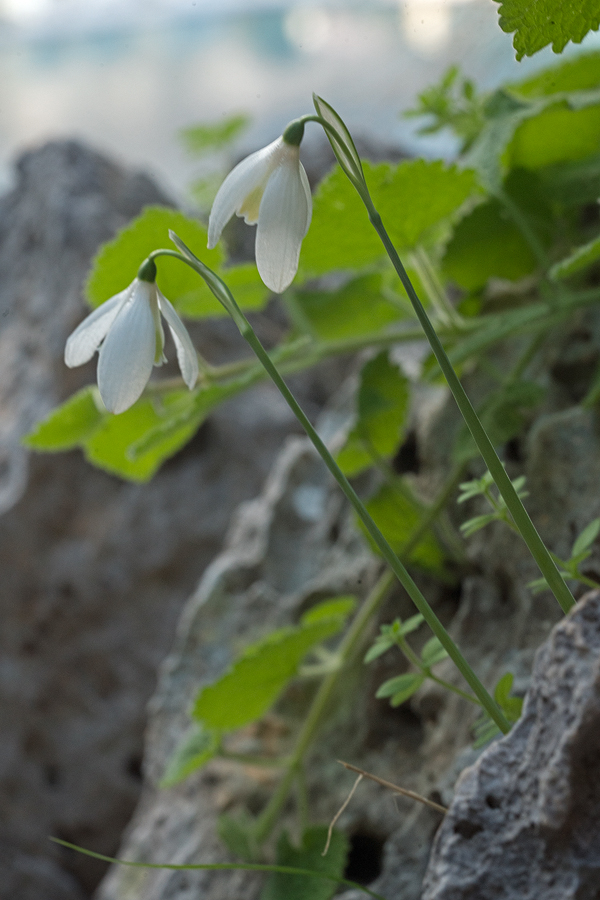

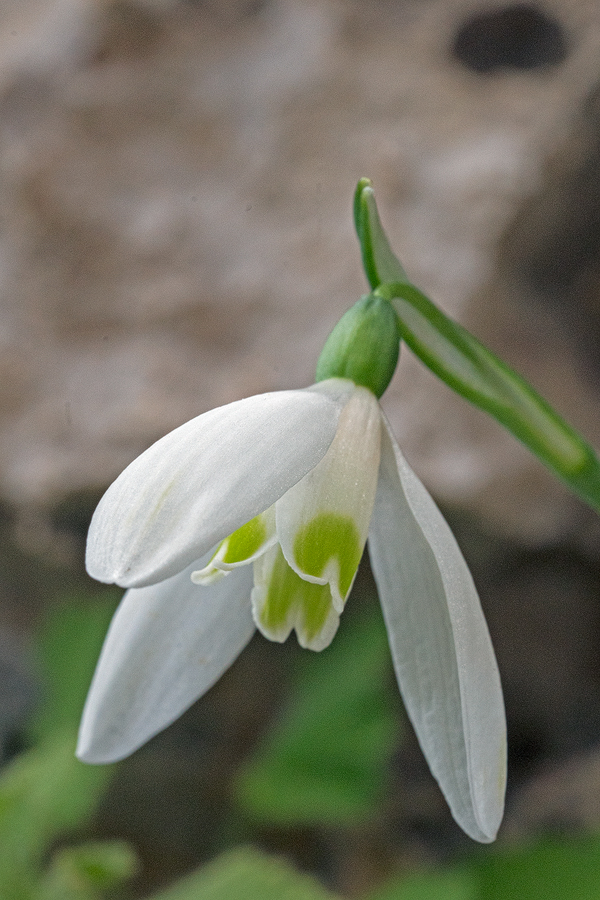
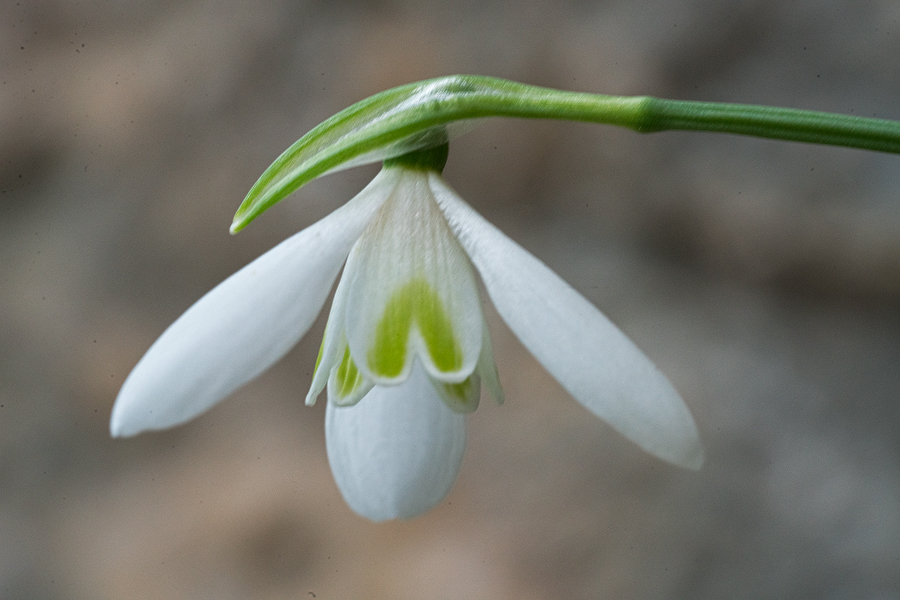
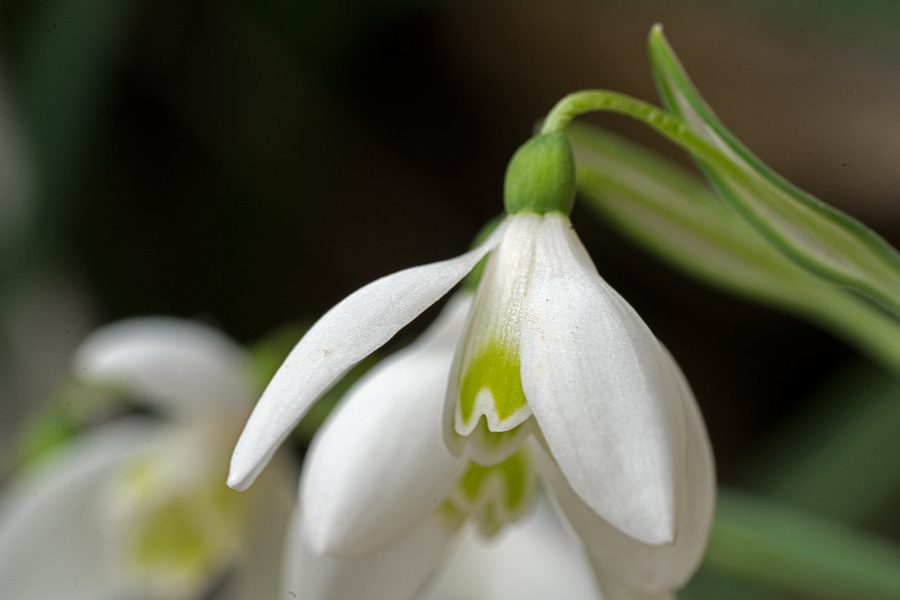
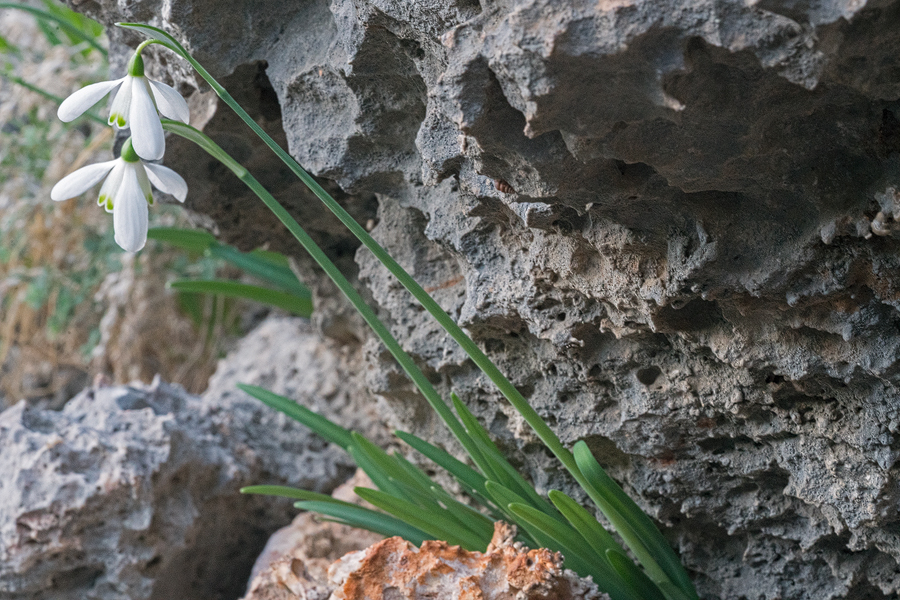
I hope that this exquisite plant continues to flourish on these wild cliffs, where it is such an unexpected and thrilling sight for anyone with the curiosity to climb the short distance from the bustling harbour, and cast their eyes upwards.
